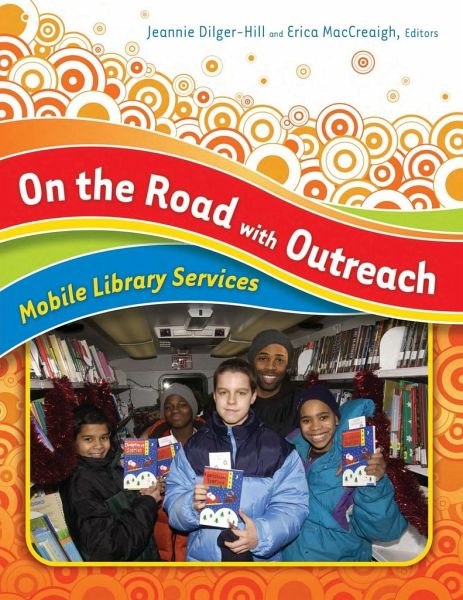
On the Road with Outreach
Mobile Library Services
Herausgeber: Dilger-Hill, Jeannie; Maccreaigh, Erica
Versandkostenfrei!
Versandfertig in 1-2 Wochen
66,99 €
inkl. MwSt.

PAYBACK Punkte
33 °P sammeln!
This "how-to" manual is a thorough compilation of essays detailing the start-up, maintenance, management, and evaluation of mobile, public library outreach services, promising to become the "bible" of public library outreach. Today mobile outreach is more vital and diverse than ever, with librarians taking it to the streets for senior citizens, childcare organizations, immigrants and low-literate populations, urban and rural communities, prisoners, low-income populations, and other traditionally underserved public library populations. The first book of its kind in more than two decades, On the...
This "how-to" manual is a thorough compilation of essays detailing the start-up, maintenance, management, and evaluation of mobile, public library outreach services, promising to become the "bible" of public library outreach. Today mobile outreach is more vital and diverse than ever, with librarians taking it to the streets for senior citizens, childcare organizations, immigrants and low-literate populations, urban and rural communities, prisoners, low-income populations, and other traditionally underserved public library populations. The first book of its kind in more than two decades, On the Road with Outreach: Mobile Library Services provides step-by-step guidance for those wishing to initiate or improve outreach services in their communities. The essays collected here come from some of the best-known movers and shakers in the mobile outreach field-all of them subject experts and active outreach practitioners. Focusing on the practicalities of establishing and maintaining service to various populations, the book covers everything from design, purchase, maintenance, and automation of bookmobiles to planning and promotion and serving specific populations. Anecdotes, as well as sample service agreements, contracts, applications, staff schedules, and other working documents enhance the text.














